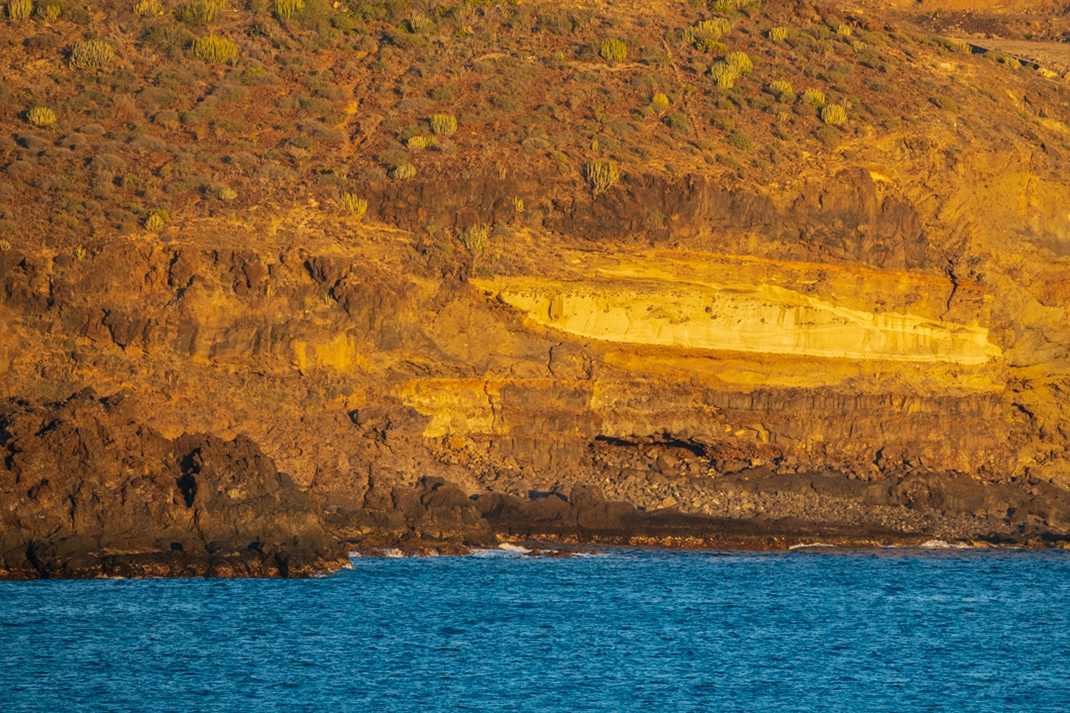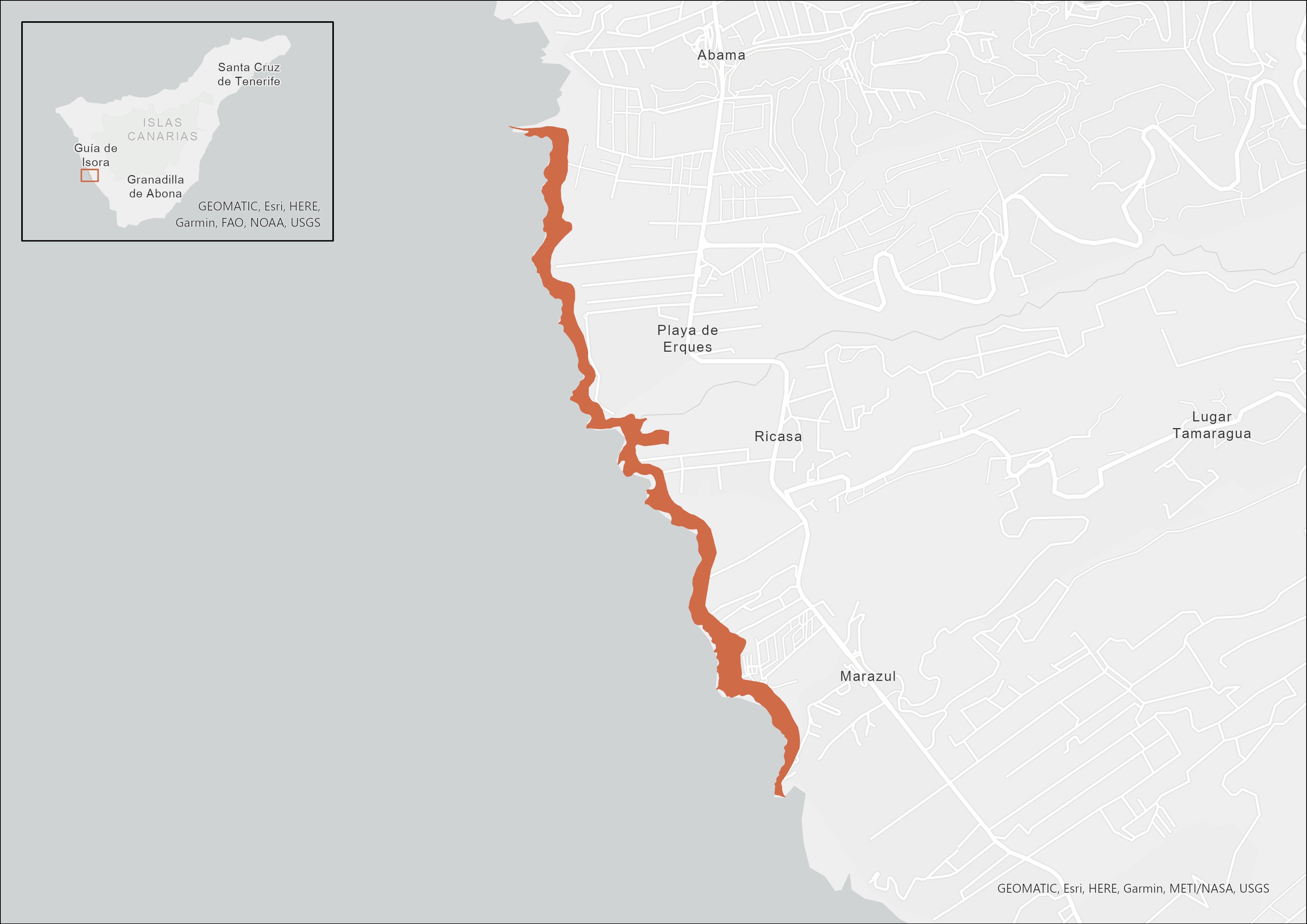Plan your next adventure
Tailor your own route along Tenerife’s trails quickly and easily..
Go to planner
The natural area of the Acantilados de Isorana is comprised of a cliff measuring 30m high and 3km long, with a small plain at the top.
Recommended time to visit: All year-round.
The cliff walls are fairly uniform, with small overhangs and numerous hollows created by the effect of the humidity from the air and the sea, making them a perfect nesting environment for seabirds.
Here you will find the mouth of the Erques ravine, which ends with a pebble beach where it meets the sea.

Vegetation is this area is sparse and that which does exist has adapted to high temperatures, low precipitation and soil with a level of salinity resulting from the sea air.
The cliff has light vegetation cover, and the most representative species are tomillo marino (Frankenia capitata) and sea lettuce (Ulva lactuca).
While in less accessible areas that are protected from human intervention, just above the cliff, there is an area of balsam spurge (Euphorbia balsamifera), alongside species that have adapted to high levels of salinity, such as the grand statice (Limoniastrum monopetalum), ruptureworts (Herniaria), mato de costa (Gymnocarpos decandrus) and espino de mar (Lycium intricatum).
Some of these species are hugely important to the natural equilibrium of the surroundings, thus making the place an essential spot for its preservation.
At the bottom of the ravines you can also find the cardón (Euphorbia canariensis), cornical (Periploca laevigata), esparraguera (Asparagus umbellatus) and the rare mataprieta (Justicia hyssopifolia). In addition, the territory is home to many species that have adapted to degraded sites, such as the magarza (Argyranthemum frutescens), aulaga (Launaea arborescens), espino (Lycium intricatum) and gualdón (Reseda scoparia).
Birds are the most common vertebrates in the area. Inland you can find species such as the Sardinian warbler, spectacled warbler, common chiffchaff, common blackbird, Berthelot's pipit and the common kestrel.
Meanwhile, during the breeding season, plain swifts can be seen in abundance on the cliffs, as well as common terns, a bird species that has significantly dropped in numbers along Tenerife’s coast.

24.1 hectares (0.1% of the island)
Tomillo marino (Frankenia capitata), sea lettuce (Ulva lactuca), balsam spurge (Euphorbia balsamifera), grand statice (Limoniastrum monopetalum), ruptureworts (Herniaria), mato de costa (Gymnocarpos decandrus), espino de mar (Lycium intricatum), cardón (Euphorbia canariensis), cornical (Periploca laevigata), esparraguera (Asparagus umbellatus), mataprieta (Justicia hyssopifolia), magarza (Argyranthemum frutescens), aulaga (Launaea arborescens), gualdón (Reseda scoparia), Sardinian warbler, spectacled warbler, common chiffchaff, common blackbird, Berthelot's pipit, common kestrel, plain swift, common tern.
Cliff, tabaibal.
Playa de Erques.
To consult permits for use and updated regulations for this Protected Natural Area, visit the official website of the Government of the Canary Islands.

Tailor your own route along Tenerife’s trails quickly and easily..
Go to planner